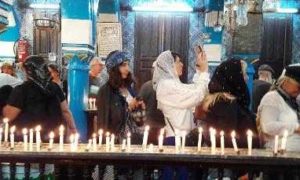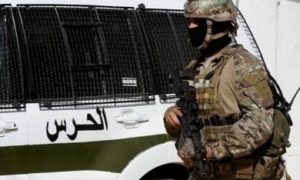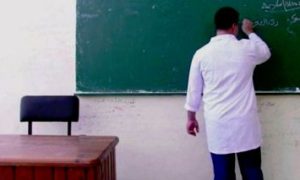The latest release on social movements by the Tunisian Social Observatory of the Tunisian Forum for Economic and Social Rights (FTDES) showed that notwithstanding the lockdown decreed in Tunisia since March 22, some 254 collective protests and 30 cases and suicide attempts took place in April.
According to the report, the group protest movements took place on the roads and in the head offices of institutions at the local and regional levels in addition to the social network Facebook.
Most of the protesters’ needs centred on the right to water and food, especially in the rural areas of Kairouan, where basic foodstuffs, such as semolina, flour and subsidised oil have been totally lacking, The TAP reported.
Moreover, in some areas, the demonstrators for semolina and flour led to the use of force through the blocking and seizing of trucks carrying these commodities by citizens living in a hunger situation.
In addition, some areas underwent a state of social tension calling for the acceleration of the granting of government-approved social assistance to help people who suffered a direct impact on their activities such as the workers, craftspeople and marginalised people.
The report points out that the protest map changed for the first time since the governorate of Sidi Bouzid was the most protestant during April with 75 protest movements (a daily rate of about 2.5 movements), exceeding the governorate of Kairouan, which was for months and years ranked first in terms of protests.
The governorate of Kairouan thus came in second place with 41 protest movements, followed by Sousse (24 protest movements), then Medenine (20 protest movements), Kasserine (17 protest movements), Tataouine (14 protest movements) and Gafsa (13 protest movements); while the number of social protests in the rest of the governorates was less than 10 protest movements throughout April.
The governorates of Tozeur, Mahdia and Nabeul recorded only two movements per governorate.
The Central-Western region represented a hotbed of protest with 133 protest movements, followed by the Eastern regions (Central, Southern and Northern) with 90 protest movements, the South-Western region with 20 protest movements and the North-Western region with 11 protest movements.
Over 47% of the total number of protests are instantaneous
Instantaneous protests accounted for 47.6% of the total observed protests including 22.3% recorded in the governorate of Sidi Bouzid (27 protest movements) while the percentage of violent movements reached 36.6% of the total observed movements in Sidi Bouzid alone and which constitutes 54.8% of the total observed movements (51 violent protest movements),the TAP added in the published report.
Despite the lockdown and the almost total state of closure in the country, the most important forms of protest observed in April were protest rallies with 29.1% of the total means of protest observed, followed by sit-ins (18.1%), distress calls (12.6%), calls through the media (7.5%), not forgetting strikes and others.
Demonstrations in the health sector were the most important, in addition to protests over security concerns, deteriorating living standards, the economic and social situation and the decline in services in various regions.
This situation foreshadows the next social explosion that will characterise the post-Corona period, the report warns.
Suicide and suicide attempts
The month of April recorded 30 acts of suicide and attempted suicides, 87% of which were among men. The 26-35 and 36-45 age group were the most prone to suicide and suicide attempts with a percentage of about 66%.
Suicide and attempted suicide by self-injury through cutting the veins was the most common form used by the victims (9 cases) with 30% of the total forms of suicide observed, followed by suicide by immolation (27%), suicide by hanging (23%) and jumping and falling (10%).
With regard to the mapping of suicide and attempted suicide, the governorate of Kairouan no longer monopolises the first place by recording only two cases, while Siliana comes first with 6 suicides and attempted suicides followed by the governorates of Mahdia, Sfax and Tunis in third place with a total of 12 cases, an average of four cases for each region.
Households, the most affected by violence
Given the imposed lockdown in homes, the household space was the most important space for violence, with about 29% of the violent incidents recorded in April, followed by the public highway for more than 20% and workspaces, which witnessed about 18% of violent acts.
The remaining cases of violence were shared between commercial spaces (4%) and health spaces, including hospitals (about 2.5%), public transport and virtual space (1.2%).
The mapping of violence did not change significantly during the period of total lockdown with the governorates of Tunis, Kairouan and Sousse recording the most incidents of violence, followed by the governorates of Siliana, Ben Arous and El Kef.
Structural human rights crisis
The Corona crisis also revealed a structural human rights crisis that affected migrants residing in Tunisia in shelters such as the El Ouardia shelter.
These structural crises will be the driving force behind a complex trajectory of protests and social tremors in the coming months unless the government manages to anticipate the worsening situation and implement an urgent economic and strategic rescue plan, the report concludes
What's happening in Tunisia?
Subscribe to our Youtube channel for updates.















































